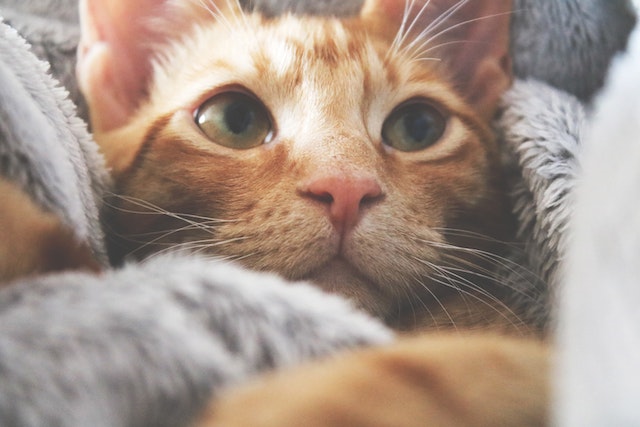Common Cat Behavioral Problems and How to Solve Them

Cats are known for their independent nature and mysterious personalities, but sometimes their behavior can be frustrating or even destructive. Understanding the root cause of common cat behavioral problems can help you find effective solutions and create a happier home for you and your feline companion.
One of the most common cat behavioral problems is scratching. Cats have a natural urge to scratch, as it helps them maintain their claws and mark their territory. However, when they scratch furniture or other household items, it can be a nuisance for their owners. To solve this problem, it’s important to provide your cat with a variety of scratching options, such as scratching posts and cardboard scratching pads. You can also try using catnip or other scents to encourage your cat to scratch certain items instead of others.
Another common behavioral problem is elimination outside of the litter box. This can be caused by a variety of factors, including a dirty litter box, a lack of privacy, or a medical condition. To solve this problem, it’s important to ensure that your cat’s litter box is cleaned regularly, that it’s in a quiet location, and that your cat has access to it at all times. If your cat continues to eliminate outside of the litter box despite these efforts, it’s important to consult with a veterinarian to rule out any underlying medical conditions.
Cats are known for their love of climbing and exploring, but when they scratch or claw at curtains, blinds, or other household items, it can be a nuisance for their owners. To solve this problem, it’s important to provide your cat with plenty of climbing and scratching options, such as cat trees and scratching posts. You can also try using catnip or other scents to encourage your cat to scratch certain items instead of others.
Another common behavioral problem is aggression. Cats can become aggressive for a variety of reasons, such as fear, pain, or territorial behavior. To solve this problem, it’s important to identify the root cause of the aggression and address it accordingly. For example, if your cat is displaying aggressive behavior due to fear, it’s important to provide them with a safe and comfortable environment. If your cat is displaying aggressive behavior due to pain, it’s important to consult with a veterinarian to rule out any underlying medical conditions.
Cats are known for their love of hunting, but when they bring their prey into the house, it can be a nuisance for their owners. To solve this problem, it’s important to provide your cat with plenty of interactive toys and activities that mimic hunting behavior. You can also try using catnip or other scents to encourage your cat to hunt certain items instead of others.
Another common behavioral problem is excessive grooming. Cats can groom themselves for hours on end, which can lead to hairballs, skin irritation, and other health problems. To solve this problem, it’s important to provide your cat with a healthy diet, plenty of water, and a clean environment. You can also try using catnip or other scents to encourage your cat to groom certain areas instead of others.
Cats are known for their love of independence, but when they become too independent, it can be a nuisance for their owners. To solve this problem, it’s important to provide your cat with plenty of interactive toys and activities that mimic hunting behavior. You can also try using catnip or other scents to encourage your cat to interact with certain items instead of others.
In conclusion, understanding the root cause of common cat behavioral problems can help you find effective solutions and create a happier home for you and your feline companion. Whether it’s scratching, elimination outside of the litter box, climbing, aggression, hunting, or excessive grooming, there are steps you can take to address these behavioral issues and improve the overall well-being of your cat. It’s important to remember that every cat is unique and what works for one may not work for another. It may take some trial and error to find the best solution for your cat, but with patience and understanding, you can help your cat overcome behavioral problems and live a happy and healthy life. Additionally, it’s important to consult with a veterinarian or a professional cat behaviorist if your cat’s behavior persists or causes harm to the cat or yourself. With the right approach, you can help your cat overcome their behavioral problems and create a more harmonious home for both of you.

